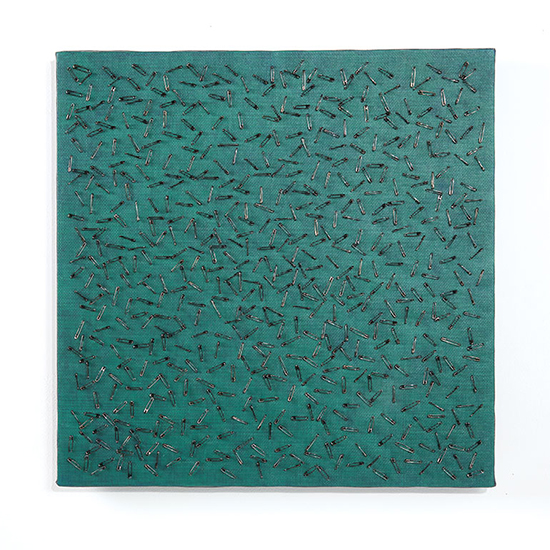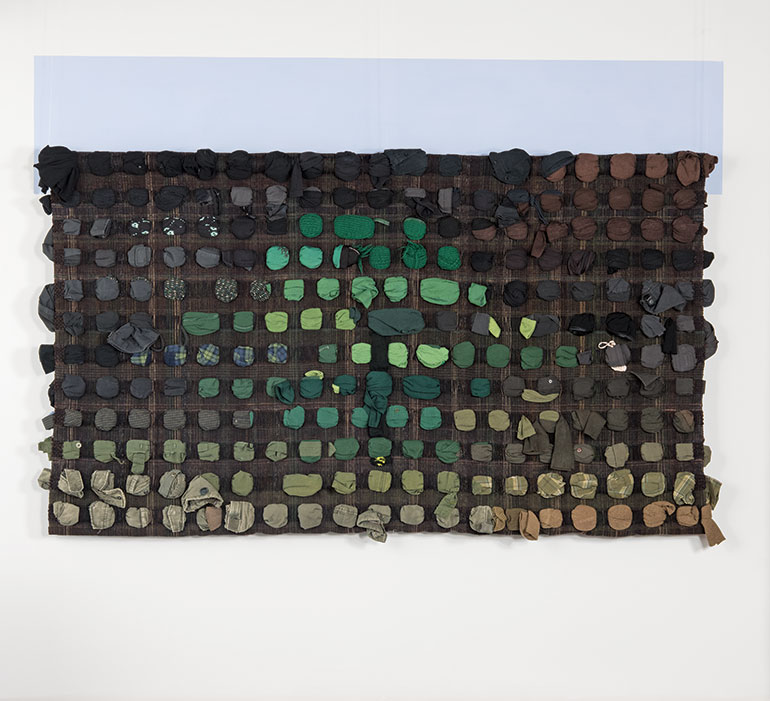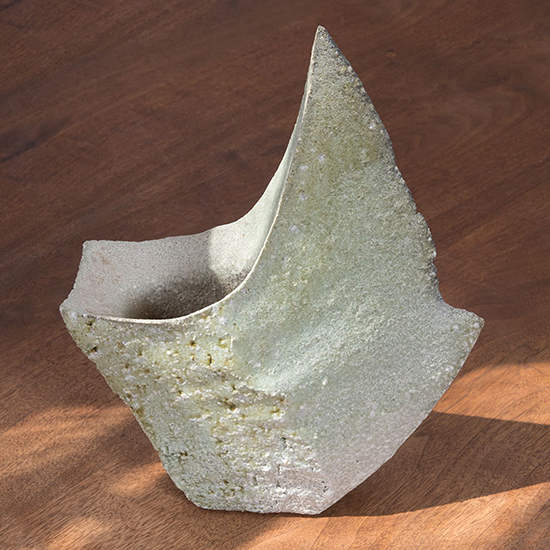
Markings and Blues, Adela Akers, linen, horsehair, metal and paint, 28” X 30”, 2018. Photo by Tom Grotta.
Fall is coming to a close and the winter months are approaching here at browngrotta arts. During the end of October and throughout the beginning of November, Tom and Carter and sometimes Rhonda, traveled around the UK and Europe capturing artists at work in their studios. Though these ventures were grand they didn’t deter us from sharing our New This Week posts. Stay tuned for more blog posts on Tom’s, Rhonda’s and Carter’s photo adventure in the coming months, but for now take a minute and read more about the art we shared this month on our social media.
We commenced November with Adela Akers’ eye-catching Markings and Blues. As in her other pieces, Akers has incorporated horsehair into Markings and Blues. Employing stiff horsehair in her work helps Akers add both texture and dimensionality, two characteristics which create a richer surface and draw focus to her work. In recent years, Akers has drawn inspiration from her life journeys. These journeys have had a transformative effect, increasing her self-confidence, expanding her artistic vision and helping her to create pieces such as Markings and Blues.
Next up, Kaze by Japanese ceramic artist Yasuhisa Kohyama. Like Kohyama’s other ceramic pieces, Kaze was made with using an anagama kiln, a traditional Japanese wood-firing kiln. Kohyama revitalized the use of the anagama kiln and has become a Sueki master. Though the ceramic is left unglazed with the Sueki method, the resulting surface appears glossy. The piece’s form is perfectly reflected in its name—Kaze; a word that represents things that enjoy the freedom of movement.

Green Blue Screen One, Tamiko Kawata, cardboard, safety pins, acrylic on canvas, 20” x 20”, 2018. Photo by Tom Grotta.
The stark contrast between the bright background and glistening safety pins of Tamiko Kawata’s Green Blue Screen One also caught our eye in November. Safety pins hold a multifunctional purpose for Kawata. Upon her move to New York in the 1960s, Kawata utilized safety pins for their unassuming, everyday purpose: to pin up clothing that was too large for her small frame. However, over time Kawata developed a fascination for the medium. The pins have facilitated Kawata in her exploration and construction of drawing-like works, self-standing, three-dimensional forms and jewelry. The physical practice of creating complex pieces with simple utilitarian objects provides a meditative and reflective process for Kawata.

Hunting (Jagtmark), Ane Henriksen, Scottish wool, weft: worn out clothes, 65” x 92”, 2017. Photo by Tom Grotta.
We concluded the month of November with Hunting (Jagtmark) by Ane Henriksen. The piece, which spans over 7.5 feet, was woven using Scottish wool and weft: old worn-out hunting clothes. Henriksen’s inspiration for Hunting derived from a painting by the Danish artist Jens Soendergaard. “I saw so much lust and longing in his green landscape,” explains Henriksen. As mentioned, Hunting is made of worn-out hunting clothes, some of which are undergarments, illustrating the different ways and fields in which hunting takes place.

